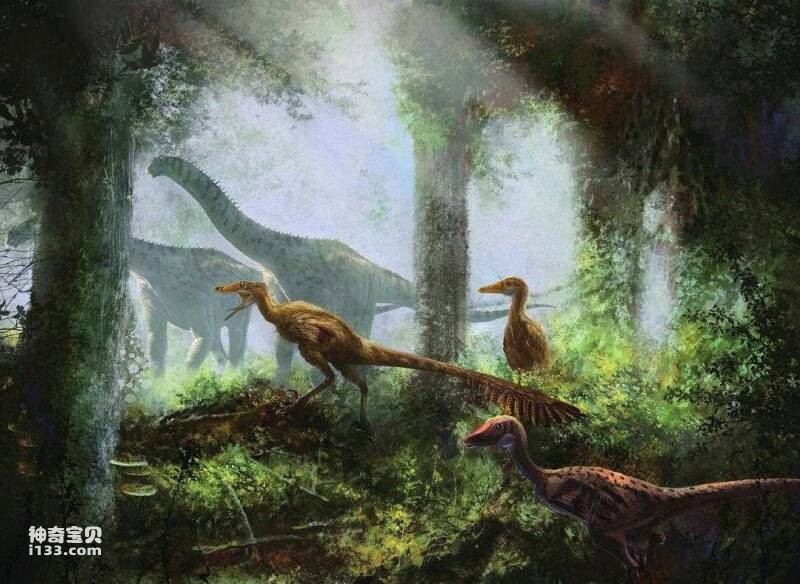Chinese name: Chinese bird dragon
Latin name: Sinornithosaurus
Age of survival: Early Cretaceous
Fossil origin: Western Liaoning, China
Physical characteristics: 1 meter long (sub-adult)
Diet: Carnivorous
Type: Theropod
Definition: Bird-like dinosaur from China

In September 1999, Chinese scholar Xu Xing reported in the magazine "Nature" about the Chinese Ornithosaurus discovered in western Liaoning, China. Fundamentally speaking, the resurrection of the theory of the origin of bird dinosaurs is largely based on the study of the bone morphology of dromaeosaur dinosaurs. However, due to material limitations, there were actually many misunderstandings about the anatomy of dromaeosaurs in the past. Accordingly, this hypothesis has been vigorously attacked by opponents in some quarters.
Sinornithosaurus belongs to the theropod dromaeosauridae in classification. Its discovery provides the possibility to study the anatomy of dromaeosaurid dinosaurs in detail. Preliminary research shows that dromaeosaurs are very close to early birds in morphology.
The Vulturesaurus discovered in Argentina belongs to the same type as Sinornithosaurus. The well-preserved fossils illustrate its connection with birds, which is particularly precious. But compared with similar fossils discovered in western Liaoning, my country, the fossils we discovered are at least 10 million years older than them. There are many similarities between the Vulturesaurus unearthed in South America and the Sinornithosaurus from Liaoning, China. For example, like the bones of birds, they all have a "U"-shaped wishbone on their heads; compared with other dinosaurs, their forelimbs are long and lightweight; their mouths are pointed and long, and the gaps between their teeth are large. Characteristics and birds are uniform.
The skeletal shape of the back of the head of dromaeosaurs represented by Sinornithosaurus is very different from that of most dinosaurs, and has many characteristics of early birds. Its shoulder girdle structure is similar to that of the earliest bird in the world, the Dromaeosaurus discovered in Germany. Archaeopteryx is almost indistinguishable. Although Sinornithosaurus cannot fly, its forelimb structure has undergone a series of changes to adapt to flight. Its forelimbs no longer extend toward the front and abdomen like most theropod dinosaurs, but upward like the wings of birds. Stretched sideways, such a skeletal system has fully met the requirements for flapping flight. This transformation laid the foundation for the origin of bird flight in the skeletal structure and is a typical "pre-evolutionary mode."
animal tags: Sinornithosaurus
We created this article in conjunction with AI technology, then made sure it was fact-checked and edited by a Animals Top editor.